FIFA’s massive $100 million World Cup fail revealed as pay debate heats up
FIFA managed to botch a crucial aspect of the Women’s World Cup – and it has had a direct impact on our national heroes, the Matildas.
World Cup
Don't miss out on the headlines from World Cup. Followed categories will be added to My News.
How good were the Matildas on Saturday? What a feeling! When we punch above our weight and bring down proud foreign countries, it sends a shiver down our national spine.
Now, beating France is very, very nice. But nothing compares to beating England.
We have the chance to do that this Wednesday at 8pm. The whole country is going to be watching, and I recommend jumping on the bandwagon.
You maybe didn’t follow the Matildas before you walked into the pub late last Saturday arvo. But three hours later, the tension of the 120 minutes, the screaming and elation of the end of the shootout and the sweet release of victory against a soccer powerhouse has bonded you with the group of strangers in the pub and the women on the screen.
You can’t deny it – you care about this team.
The whole country tuned in. It was the biggest TV event many people had ever seen.
So don’t tell me people won’t watch women’s sport because the quality is lower. People watch humans race 100m even though cheetahs are faster.
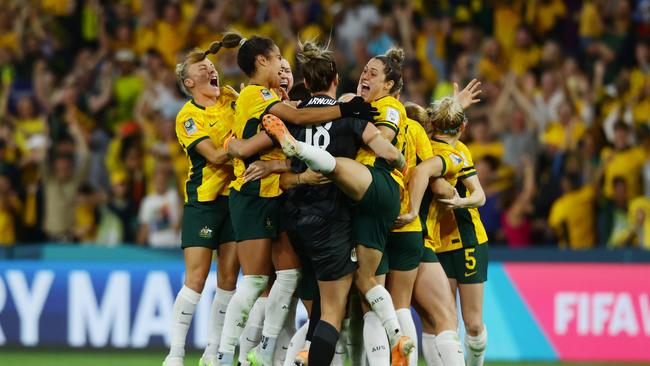
I’m not going to argue that women all run as fast, jump as high or kick as hard as the men. That just doesn’t matter much. What matters is excitement. And Australia is so, so excited by the Matildas. Their winning spree has riven the nation with glee.
However, it’s not just winning that matters. We won the netball recently, to much less fanfare. What elevates soccer is knowing everyone else cares.
Nothing attracts a crowd like a crowd. That’s what international soccer has – we know the world cares. It’s why the Olympics matter too. FIFA expanded the Women’s World Cup to 32 teams this time, up from 24 last time.
That has been helpful in making this edition of the Women’s World Cup even bigger and more global.
Big emotions, small pay
You can’t talk about the Matildas without talking money.
They’re beloved national heroes, but most years, the players make less than a plumber. Sam Kerr is making millions, but the rest of the team? Not so much.
The World Cup has prize money of $110 million, up from $30 million last time. Our women will take home $400,000 each if they win the cup.
It’s a big pay rise, but still only a fraction of the $440 million in prize money for the men’s soccer World Cup.
Female sportspeople get paid quite a bit less than males on average, as the next chart shows.
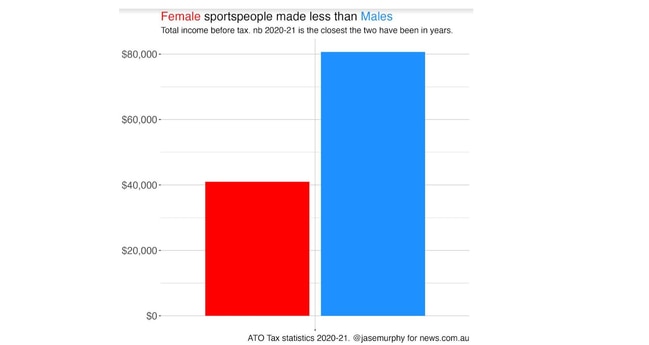
What’s going on? You can’t talk about money in this Women’s World Cup without talking about broadcast rights. That’s where the money comes from, really.
FIFA was supposed to make $300 million selling the rights to this World Cup, but only managed $200 million. It is the first time they’ve ever tried to sell the women’s rights separately from the men’s World Cup. Previously it came as part of the package, like the toy in the Happy Meal.
For this edition of the Cup, FIFA decided to do it properly. They grew the competition from 24 teams to 32. They expanded the prize money. They devoted money to help teams prepare and promised that the players would get the same accommodation and training quality standards that applied in the men’s World Cup.
And then they tried to auction off the rights.
The last Women’s World Cup got viewership of over a billion people. Women’s soccer has been on an upwards trajectory ever since, and they expect this edition to get 2 billion viewers. Not as many as the 5 billion viewers for men’s World Cup, with its 64 teams and global superstars, but a very large number nevertheless.
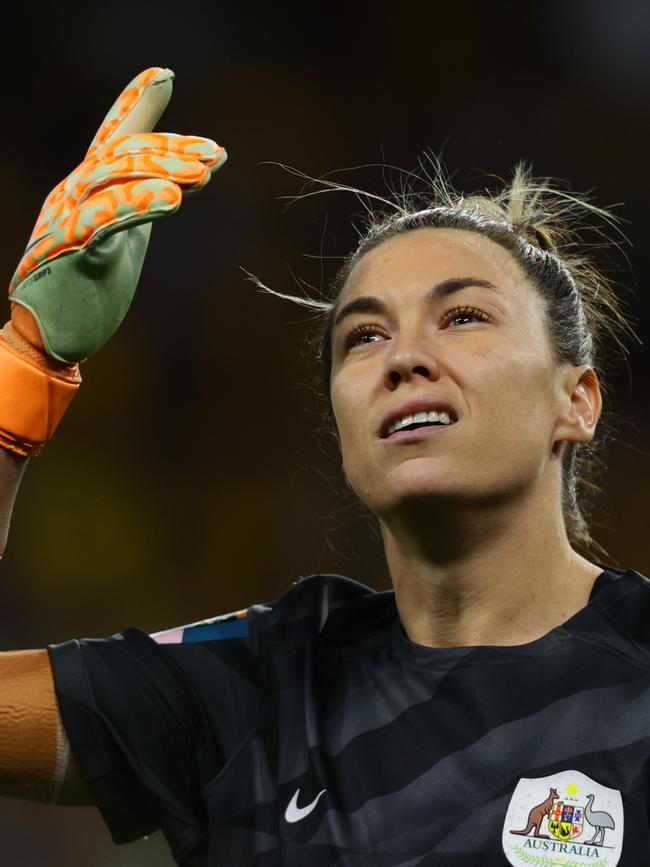
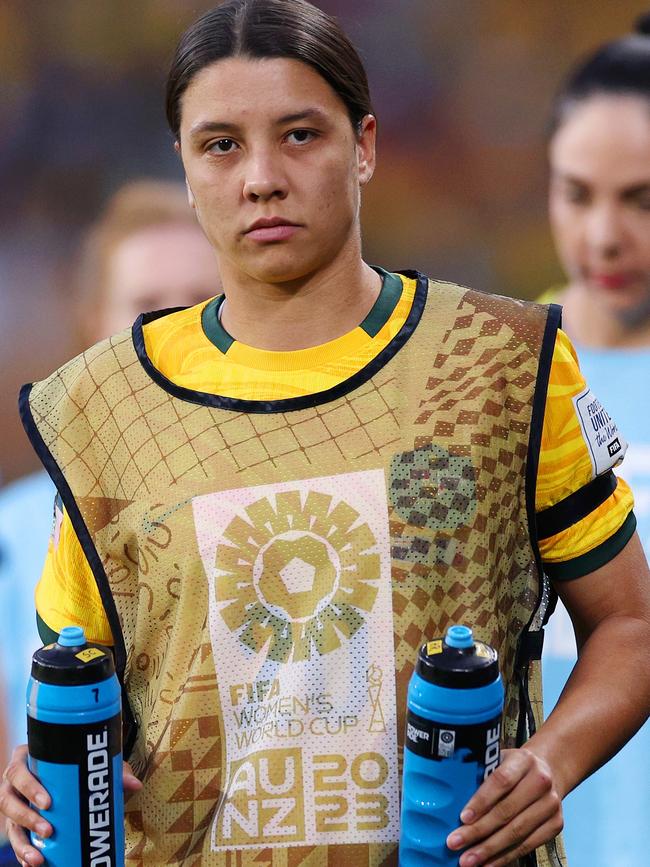
However, as the Wall Street Journal reports, FIFA fluffed it.
“FIFA is receiving between 10- and 100-times inferior offers for the (FIFA) Women’s World Cup than for the men’s World Cup,“ the FIFA president complained.
FIFA haggled and pushed and rejected some bids. In the end, it scraped together $200 million from broadcasters. This figure includes money from previous bundle sales – for example, in the US, the broadcast rights were already sold to Fox Sports in a package including the men’s World Cup in 2026.
Penny-pinching broadcasters feared nobody would watch. But actual viewership? It has been very, very strong.
Meanwhile, somewhere, some Channel 7 executives must be lining up the biggest bonus in TV history. The broadcaster paid just $5 million (as rumoured in the financial press) for the rights to show the Matildas’ games. And somehow, out of that, they’ve conjured the most-watched Australian TV program since Cathy Freeman 2000. The ratings for our triumph over France were astronomical.
And the World Cup is not even finished.
When we play England on Wednesday, the electricity companies should probably spin up a few extra power plants, because every TV in the country is going to be tuned in.
It’s the same overseas. The audiences are huge. But the fees the broadcasters paid for the rights are puny.
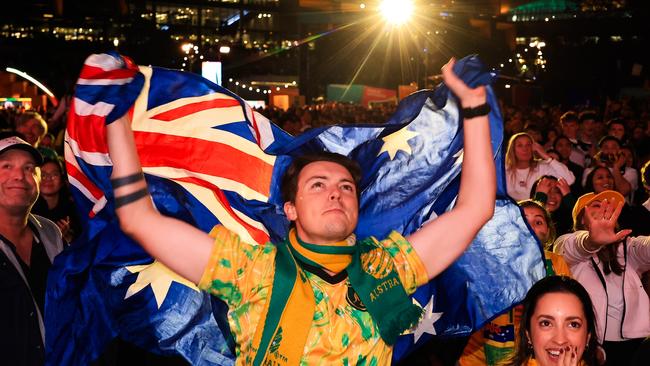
Despite being in a terrible time zone for the Americans, their team got record viewership at home. When they played at 3am American time, the US broadcaster recorded the highest ever ratings for an overnight game. Americans wanted their team – which won the cup in 2015 and 2019 – to three-peat. Instead they bombed out.
In the UK, the Lionesses are pulling in TV audiences of around 4 million viewers despite playing morning games. Certainly the Australian time zone has to account for some of the uncertainty of European broadcasters ahead of the tournament. Would anyone watch? But the answer has come back in the affirmative. That has to bode well for the next Women’s World Cup, which will be held in either a European or American time zone (bidders for 2027 include Brazil, South Africa, USA/Mexico and Germany/Netherlands/Belgium).
In summary, broadcasters let FIFA down. Even Channel 7 did it half way. They paid for some of the matches, but far from all of them. The rest are on Optus Sport, a platform diehard soccer fans might subscribe to, but not the rest of us. And the point of women’s soccer is not appealing to diehard soccer fans. The point is reaching new audiences and bringing together people who might not usually feel included by sport.
This Wednesday night, everyone’s going to be watching. Men and women, boys and girls. And the lesson broadcasters around the world will take from the Australian experience is that if the time zone is right and the team is winning, the audience upside is unlimited.
And that is going to help deliver much more equal pay.
Jason Murphy is an economist | @jasemurphy. He is the author of the book Incentivology.
Originally published as FIFA’s massive $100 million World Cup fail revealed as pay debate heats up





